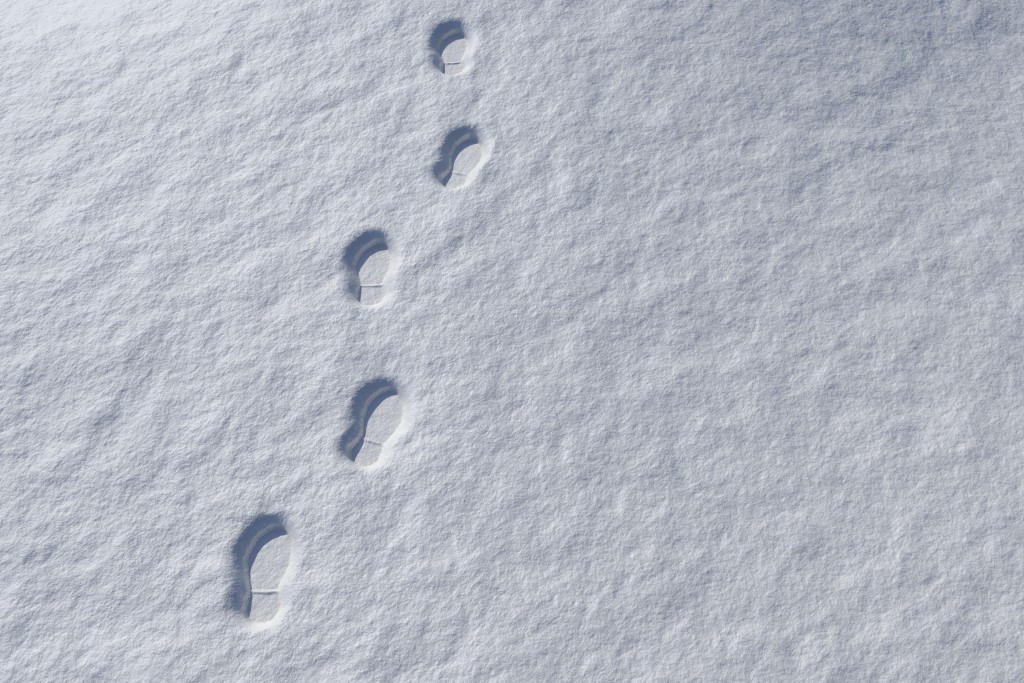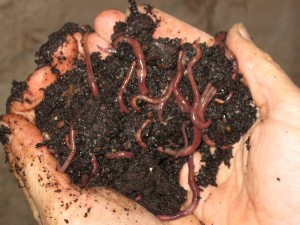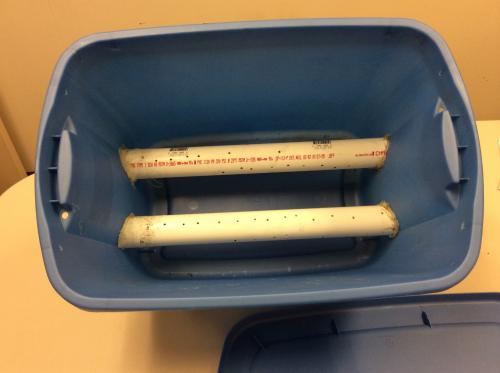Worm Composting In Winter & Cold Weather
Guides to Making Worm Compost
“Winter is quickly approaching and I’m wondering what I need to do to get my worms through the winter. I have a small outside worm bin made out of cinder blocks with an earth floor. It is buried about one foot deep. Do I need to add extra bedding? Do the worms hibernate? Do I feed them all winter?” ~ Doris Stevens
You’re right, Christmas is coming, temperatures are dropping and in some places it will be snowing! This makes it very timely for going through some basic things to do to keep your wormery working and your worms healthy (and alive!)
Worms Hibernate
Many people ask: What do worms do during the winter to stay alive? The answer is that most of them hibernate. Earthworms are cold blooded i.e. they cannot regulate their body temperature like we can. So their body temperature is directly affected by their environment.
As the surrounding temperature drops, so will their body temperature. When this happens, their body processes will start processing at a slower rate, which makes they more ‘sluggish’. The worms will move about slower, eat slower and create worm cast slower.
When the temperatures reaches down to near freezing point things can get so slow that it seems the worms do not move at all. This is when they hibernate to conserve energy and to stay alive.
Freezing Kills Most Compost Worms
Some species of earthworms can tolerate some degree of freezing (0°C and under) which is called the freezing point tolerance. However most of the earthworms used for composting do not have a freezing point tolerance and will die once their environment has reached 0°C.
This is because a massive proportion of the earthworm is water. When water freezes it expands in size and forms ice crystals. When the whole worm undergoes this freezing change, the crystals can destroy the inner workings and the cells of the worm causing irreparable damage.
In nature most earthworms hibernate by creating a small burrow pocket.
The pocket will have enough oxygen for the worm to survive in the winter. The worm will then curl itself up into a ball and secrete mucus to surround it. This mucus lowers the freezing point so that the worm is protected from freezing easily.
Some worms (such as the Lumbricus Terrestris) do not hibernate. They create deeper burrows where temperatures are warmer due to the insulation from the surrounding soil.
The good news about freezing temperatures is that worm cocoons can easily survive freezing points. So even if the earthworms are wiped out through a harsh winter, the cocoons ensure that their worm populations can carry on.
As a worm farm owner, you don’t want your beds to reach freezing point. If you use your beds to recycle organic waste you don’t want the temperatures to be dipping so much that they can’t process food either. Fortunately there are some tricks to keep your worm beds insulated and warm. But bear in mind that the composting rate WILL be slower.
Keeping Your Wormery Productive in Winter
First of all, if you have a small wormery that can be easily moved, it will save you a lot of effort by moving it into a more sheltered area such as your garage. The following techniques can still be used if your location does go through some tough temperatures.
Insulation is a great economical way to keep your worm bed warm. There are a few ways and materials which you can use to do this.
First of all the soil in your garden and snow (if your area generates a lot of snow) are great FREE insulating materials.
These materials are fluffy by nature and contain millions of small pockets of air which helps trap heat in. By simply digging and burying your wormery in the ground or snow, the wormery can be protected from the harsher temperatures outside. Instead of burying it, you can also surround your bin with some insulation material such as polystyrene (if you have some waste lying about), thick carpet or even a clear plastic covering (which not only traps heat, but creates a greenhouse effect).
Within the wormery, the upper surface can be protected by adding a thick layer of straw, hay, grass or even dry leaves. These materials are great as it again creates pocketfuls of air. With straw and grass, they may even generate a small amount of heat in the right conditions.
Some people have gone further and purchased electric heaters to help raise temperatures of the worm bin.
These can be easily bought from aquarium shops where the heaters are used to heat ponds and aquariums. These are mostly a metal rod which heat up and are relatively inexpensive. They can keep certain areas of your wormery warm, although for a larger wormery system, more than one rod will be needed.
Heating rods usually range in temperatures of 23 – 35°C. But it may be easier to just turn them up to its maximum and stick the rod through the centre of the wormery. This will prevent the centre and the surrounding areas from freezing.
The worms will also adjust their own position to find the spot most comfortable for them. If the area is too hot, the worms will move further away from the rod. This most important thing is not to let the area freeze. With the centre being the warmest point and being the place less likely to freeze, the worms will start to gather around that area.
It will be best to feed around the area of the heat rods since this is where the wormery will be most active. If done correctly, you may even be able to keep the rates up as they were in autumn!
The last thing is a technique that I came across on the net. I can’t vouch for this technique but it seems like a very viable technique which may just work.
Geothermal thermal heating.
This technique brings air through pipes which are buried in the ground under the wormery. It then utilizes the natural insulated ground to warm up this air, which is then passed through the wormery system.
It sounds like an expensive process, but the technique shown on this webpage is actually very inexpensive and only requires a few drain pipes which can be easily purchased from most hardware stores.
The following link will bring you to the page, which explains in more detail the process of geothermal. It links you to a page to teach you how to build it!
Winter temperature control for worm composting (or vermicomposting)
Allotment Growing UK has been granted exclusive & sole permission to republish the above article for the benefit of it’s visitors who are interested in composting with worms. Originally published in the excellent free worm composting newsletter –
Worm Farming Secrets
Worm Composting In Winter and Cold Weather Worm compost tips, tricks and general information on making worm compost.

www.allotment-garden.org






